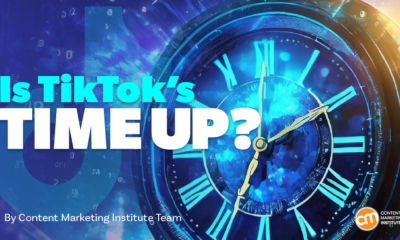Once you have determined that customer journey orchestration (CJO) software makes sense for your business, spend time researching individual vendors and their capabilities. Completing this research will better prepare you for when the time comes to select a specific vendor.
Researching customer journey orchestration
Here are the important steps in evaluating your company’s current CJO capabilities and conducting research on solutions.
Make a list of current capabilities. Make a list of all the CJO capabilities you currently have, those that you would like to have and those that you can’t live without. This last category is critical and will help you avoid making a costly mistake. For example, if you seek to harness the data coming from your call center, make sure to ask vendors about their capabilities in this area, and their ability to perform sentiment analysis on the conversations happening in that channel.
Take your list of capabilities and then do some research. Speak to your marketing peers at industry events to find out who is using which tool and why. Many vendors profiled in provide whitepapers and interactive tools that can help. The MarTech website is a great resource for advice and information on vendors.
Narrow your list to those vendors that meet your criteria. Submit your list of the critical capabilities you’ve identified, and set a timeframe for them to reply.
Decide whether or not you need to engage in a formal RFI/RFP process. This is an individual preference. If you run a formal process, be sure to give the same list of capabilities to each vendor to facilitate an apples-to-apples comparison.
The most effective RFPs only request relevant information and provide ample information about your brand and its needs. It should reflect high-level strategic goals and KPIs. For example, mention your company’s most important KPIs and how you will evaluate the success of your CJO efforts. Include details about timelines and the existing martech systems you have deployed.
When written properly, an RFP will facilitate the sales process and ensure that everyone involved on both sides comes to a shared understanding of the purpose, requirements, scope and structure of the intended purchase. From the RFP responses, you should be able to narrow your list down to three or four solutions that you’ll want to demo.
Get the daily newsletter digital marketers rely on.
Questions to ask vendors
Set up demos with your short list of vendors within a relatively short time frame after receiving the RFP responses. Make sure that all potential internal users are on the demo call, and pay attention to the following:
- How easy is the tool to use?
- Does the vendor seem to understand our business and our marketing needs?
- Are they showing us our “must-have” features?
Other questions to ask each vendor depending on the type of services they provide include:
Data gathering
- Does the solution integrate with the systems you currently use to store customer data?
- What type of machine learning and/or artificial intelligence does the tool use?
- Are we able to choose different models and tune them to our own needs?
- Can we segment and view customers by multiple criteria?
- Can the tool identify anonymous interactions and match them to the correct profile?
- Does the tool allow us to reconcile data from all of the channels in which we interact with
- customers?
- Is the solution GDPR and CCPA compliant?
Reporting
- Does the solution provide real-time analytics?
- What do the reports look like and how can they be customized?
- Does the tool use artificial intelligence and machine learning? How?
- Is sentiment analysis of relevant customer interactions available?
- What types of insights are surfaced through analysis and what recommendations does the
- tool make proactively?
Real-time interaction management
- How does the tool natively orchestrate interactions or integrate with the systems we use
- (i.e. display ad management, content management systems)?
- How is data exchanged? Are real-time or near real-time personalized or segmented
- campaigns feasible?
Training and customer support
- How much training will we need to use the software, and what kind of training is available?
- What level of customer support do you offer, and when is it available (i.e., 24/7 vs. 8/5)?
- What is the turnaround time for support queries/tickets?
- Do you provide professional services or support for our transition?
- What new features are you considering?
- What’s the long-term product roadmap and launch dates?
Download the full MarTech Intelligence Report: Enterprise Customer Journey Orchestration Platforms: A Marketer’s Guide








































You must be logged in to post a comment Login